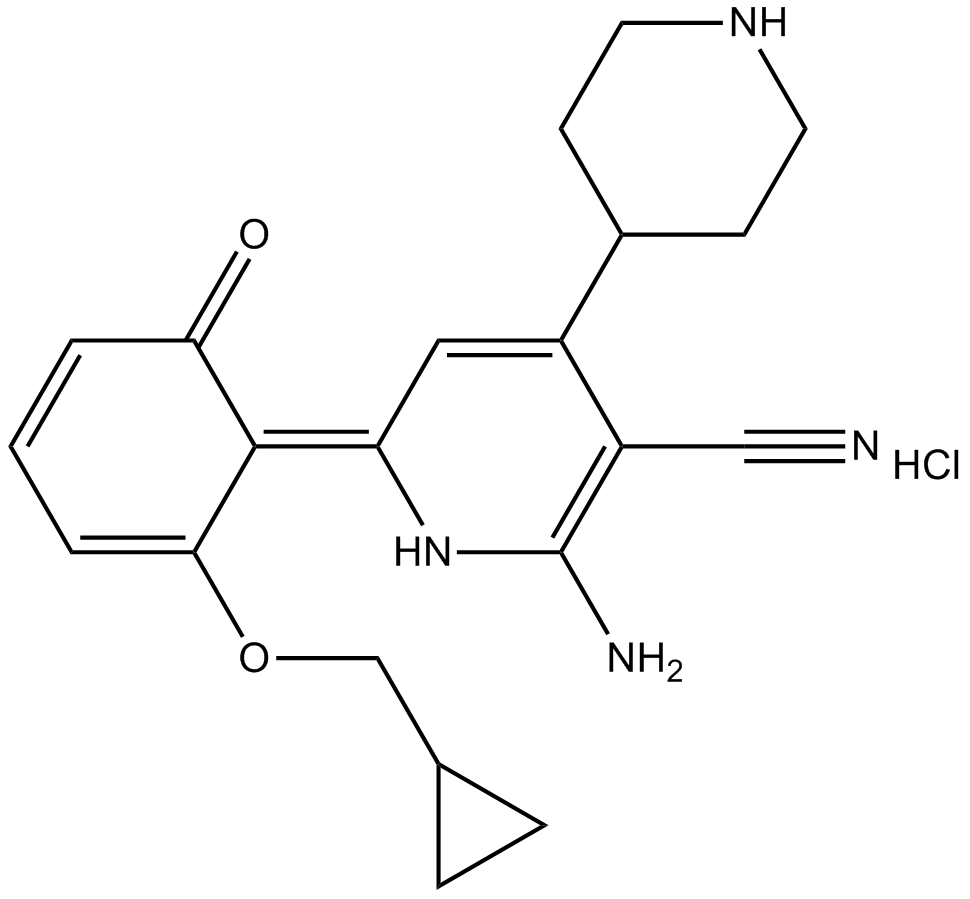IKK-2 inhibitor VIII |
| Catalog No.GC11508 |
Products are for research use only. Not for human use. We do not sell to patients.

Cas No.: 406209-26-5
Sample solution is provided at 25 µL, 10mM.
ACHP Hydrochloride is a highly potent and selective IKK-β inhibitor with an IC50 of 8.5 nM.
ACHP (Compound 4j) exhibits potent IKK-β inhibitory (IC50: 8.5 nM) and cellular activities (IC50=40 nM, in A549 cells). ACHP moderately inhibits IKK-α with an IC50 of 250 nM but exhibits good selectivity towards other kinases, such as IKK3, Syk and MKK4 (IC50>20,000 nM). Moreover, ACHP demonstrates quite potent activity in various cellular assays. ACHP inhibits NF-κB-dependent reporter gene activation in TNFα-activated HEK293 cells and PMA/calcium ionophore-activated Jurkat T cells. ACHP fails to inhibit PMA-induced AP-1 activation in MRC-5 cells and PMA/calcium ionophore induced NF-κB dependent reporter gene transcription in Jurkat cells even at concentrations exceeding 10 μM. ACHP selectively interferes with the NF-κB signaling cascade by inhibition of IKK-β in living cells[1]. ACHP inhibits the growth of these cells in a dose-dependent manner. Tax-active cell lines are more susceptible to ACHP than Tax-inactive cell lines and Jurkat (IC50 values in Tax-active cell lines, Tax-inactive cell lines or Jurkat are 3.1±1.3 μM, 10.7±1.7 μM and 23.6 μM, respectively), suggesting that the growth of Tax-active cells depends on NF-κB more than Tax-inactive cells[2].
ACHP (Compound 4j) is orally bioavailable in mice and rats and demonstrates significant in vivo activity in anti-inflammatory models (arachidonic acid-induced mouse ear edema model). ACHP has reasonable aqueous solubility (0.12 mg/mL in pH 7.4 isotonic buffer) and excellent Caco-2 permeability (Papp 62.3×10-7 cm/s), and demonstrates orally bioavailability in mice (BA: 16%) and rats (BA: 60%). The favourable bioavailability of ACHP in rats is likely due to its low clearance (0.33 L/h/kg). In an acute inflammation model, ACHP exhibits oral efficacy at 1 mg/kg in a dose-dependent manner[1].
Reference:
[1]. Murata T, et al. Synthesis and structure-activity relationships of novel IKK-beta inhibitors. Part 3: Orally active anti-inflammatory agents. Bioorg Med Chem Lett. 2004 Aug 2;14(15):4019-22.
[2]. Sanda T, et al. Induction of cell death in adult T-cell leukemia cells by a novel IkappaB kinase inhibitor. Leukemia. 2006 Apr;20(4):590-8.
Review for IKK-2 inhibitor VIII
Average Rating: 5 (Based on Reviews and 30 reference(s) in Google Scholar.)
Review for IKK-2 inhibitor VIII
GLPBIO products are for RESEARCH USE ONLY. Please make sure your review or question is research based.
Required fields are marked with *




















